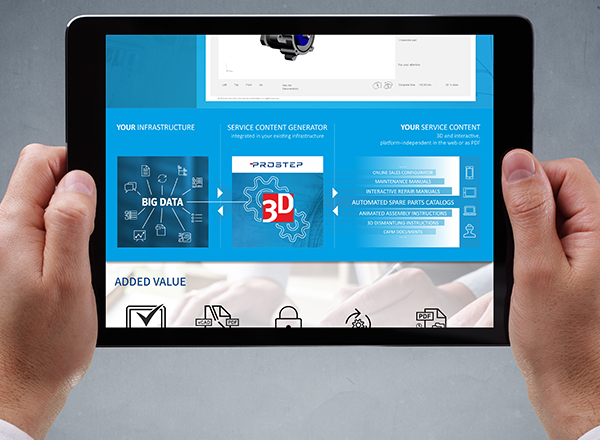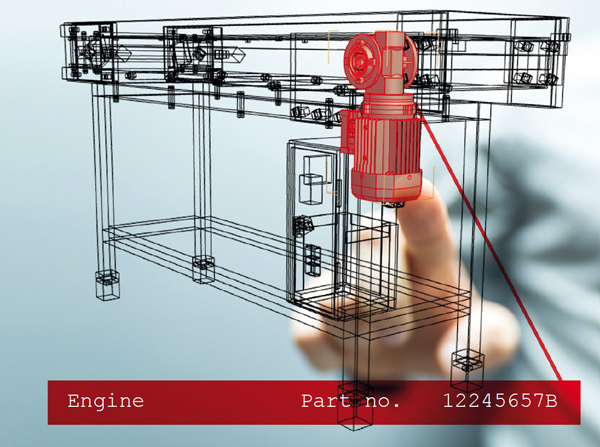
|
New white paper on digitalizing service processesBy Harald Blümel The automated preparation and provision of spare parts catalogs, maintenance manuals and other documents provides the basis for efficient service processes and support for new, service-oriented business models. A PROSTEP white paper explains how information flows between the development, sales, technical documentation, spare parts management, after sales, and service departments can be systematically digitalized. 
The service business is not only a high-margin source of revenue for companies in the manufacturing industry but also enables them to differentiate themselves better from their competitors. Services are not as easy to copy as products because they require qualified employees and a good knowledge of customer requirements. At the same time, the connection of products via the Internet of Things (IoT) is enabling new services such as remote maintenance, predictive maintenance, functional (software) updates and the like or even innovative product-as-a-service offerings. Customers attach great importance to new service offerings of this type as they guarantee maximum availability of their machines and systems. In order to exploit the potential of the service business, manufacturers must integrate their development, production and after-sales processes more tightly and improve the digital flow of information, from the creation and provision of service documentation to spare parts provisioning through to the feeding back of changes from the field to the organization. The systematic digitalization of service-relevant information allows both its visualization in the product context with the help of augmented reality (AR) methods and the use of digital product models for the on-site additive manufacturing of spare parts. While data and information flows in engineering have become much more consistent in recent years – thanks to the use of PLM – digital data is rarely passed on to the technical documentation and after sales departments without discontinuities between media. It is, however, efficient reuse that provides the basis for improving information flows. Companies need flexible communication tools and technologies to prepare the data with as little effort as possible and make it available to recipient/users on any end device. This applies above all to 3D CAD models, which make technical interrelationships easier to understand. One of the main strengths of PROSTEP's service content solutions is the ability to merge 3D models from any CAD system with the assembly structures and all types of accompanying documents in 3D PDF documents. Bidirectional linking allows 3D content to be seamlessly combined with purchasing, manufacturing and maintenance information and visualized offline using standard viewers such as Adobe Reader or online in any HTML5-capable browser. Support is provided for visualization on any end device, including AR glasses. 
The integration with CAD, PDM and ERP systems means that the creation of service documents can be automated to a very large extent. Property rights can be assigned to data and documents in the structured PDF container in order to protect intellectual property. Graduated security mechanisms allow access rights to be configured user-specifically in order to control the transfer and use of the contents even after the PDF documents have been sent. Blockchain technology can be used to authenticate the embedded 3D data when it is sent. This ensures, for example, that the data has not been compromised when spare parts are manufactured using 3D printing. PROSTEP's service content solutions are used in different areas of application ranging from technical documentation to production planning, production management and assembly planning through to spare parts management.

The key benefits of the service content solutions include the faster provision of service documentation, more readily understood documents thanks to embedded 3D content, easy online and offline access to all relevant service documents from any end device, reliable identification of the required spare parts thanks to product-specific spare parts catalogs and better feedback of change information from field service staff – and all this with optimal protection of intellectual property. The solutions play a major role in improving information flows within the company and in communication with the customer's maintenance engineers or external service partners. You will find more information on possible applications for PROSTEP's service content solutions and their technical foundation in the white paper, which you can download free of charge. |
|
| © PROSTEP AG | ALL RIGHTS RESERVED | IMPRESSUM | DATENSCHUTZERKLÄRUNG | HIER KÖNNEN SIE DEN NEWSLETTER ABBESTELLEN. |

